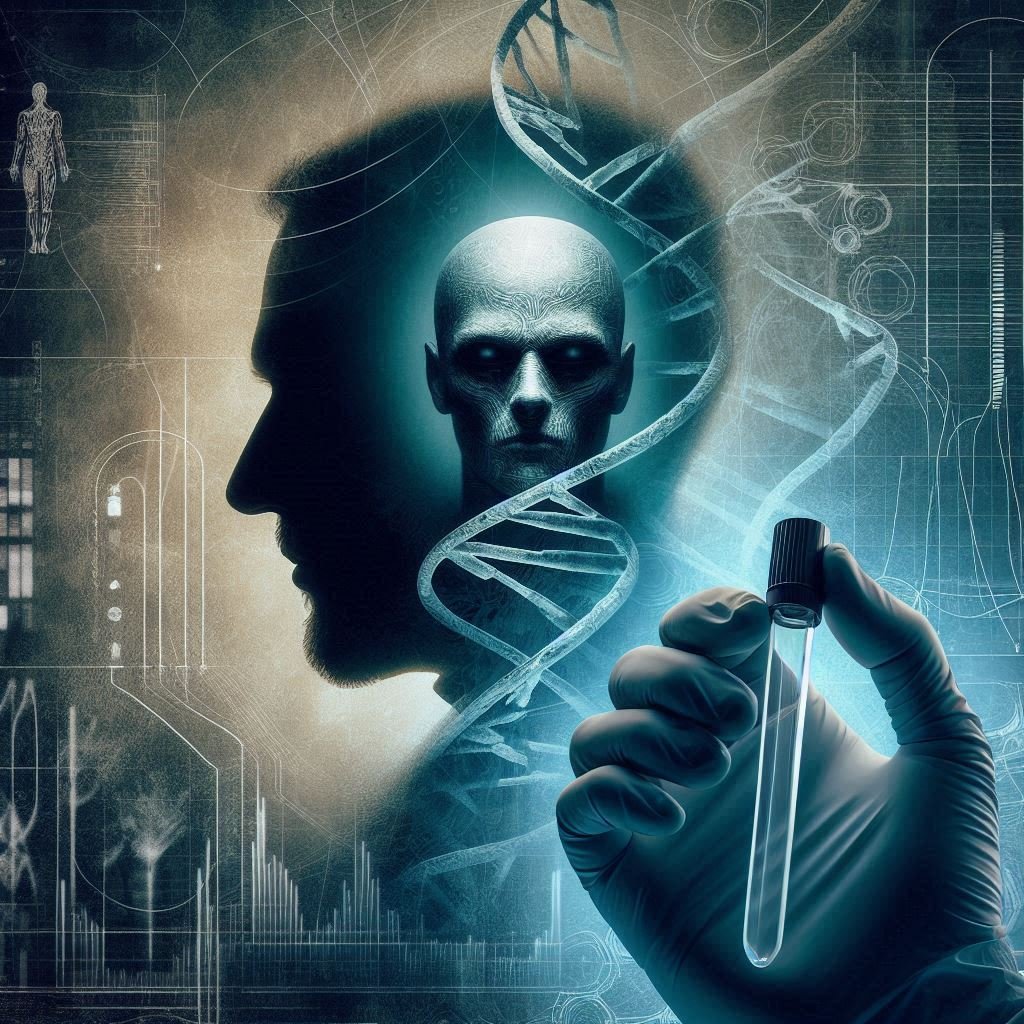Imagine you’re sitting in your living room on a quiet California evening in the late 1970s. The sun has long set, and the only sound is the faint hum of the air conditioner. You glance at the clock—9:47 PM. Then, you hear it.
A creak.
It’s soft, almost nothing, but it’s coming from outside your house. You tell yourself it’s the wind, or maybe a branch. But your dog is standing alert, growling low. Then… footsteps. Slow. Careful.
And before you can reach the phone, a masked man steps into your room.
For more than a decade, California was haunted by a man who seemed to come from nowhere and vanish without a trace. He was called many names: the East Area Rapist, the Original Night Stalker, and finally, the Golden State Killer.
For over 40 years, no one knew who he was. But in 2018, a single strand of DNA—left behind decades earlier—finally pulled the mask off the ghost who had terrified an entire state.
This is the story of how one of America’s most terrifying cold cases was solved… by a spoonful of spit and a family tree.
The Terror Begins
It all started in the mid-1970s, in the quiet suburbs of Sacramento, California. Families moved there for safety, good schools, and peaceful neighborhoods. But that peace didn’t last long.
In 1976, reports began flooding in about a man breaking into homes at night. At first, he targeted women who lived alone. He wore a ski mask and carried a flashlight. He was quiet, methodical, and terrifyingly calm.
He would sneak in while the victims slept, tie them up with shoelaces, and whisper chilling threats. He seemed to know everything about them—their routines, their houses, even their names.
The press called him the East Area Rapist, and by 1978, he had attacked more than 50 women.
Police were desperate. Neighborhoods set up watch patrols. Hardware stores sold out of locks and guns. But no matter how hard they searched, the attacker always slipped away. It was as if he vanished into the night.
Then things got worse.
The Killer Evolves
In 1979, the attacks suddenly spread south. This time, the pattern changed.
Now, the masked man wasn’t just breaking in to assault women—he was killing them.
Couples were found dead in their homes, tied up in their own beds. The man had turned into something far more dangerous. He was now being called the Original Night Stalker, and the murders stretched across California—from Ventura to Orange County.
He had a signature. He’d tie up both victims, stack dishes on the man’s back, and tell them that if he heard even a single plate clatter, he would kill them both. Then, he’d attack the woman as the man lay frozen, too terrified to move.
He would whisper to them as he worked. He’d cry fake tears. He’d say things like, “I hate you, Bonnie,” over and over again—words that would mean nothing to police for decades but would later turn out to be a vital clue.
He was unpredictable. Brutal. And he left nothing behind except broken families and a chilling silence.
By 1986, the attacks stopped as suddenly as they had begun. For years, investigators hoped he had died, gone to prison, or moved away.
But the truth was worse. He hadn’t vanished. He’d just gone quiet.
The Cold Case
For the next 30 years, detectives across California refused to let the case die. The rapes in the north and the murders in the south seemed connected, but there was no proof.
Until 2001.
That’s when DNA testing had finally advanced enough for scientists to compare biological evidence from old crime scenes. When they ran the samples from both cases, the results came back chilling.
The East Area Rapist and the Original Night Stalker were the same person.
Now they had a unified monster—and a new name: The Golden State Killer.
The problem was, even with DNA, there was no match in any criminal database. The killer had never been arrested for a serious crime, so his DNA wasn’t on file.
It was like having fingerprints but no name.
And that’s how the case sat—cold but not forgotten.
The DNA Breakthrough
Fast-forward to 2018.
Technology had changed. People were sending their DNA to companies like Ancestry.com and 23andMe to learn about their family trees. Millions of people were voluntarily giving their genetic information to the internet.
One investigator, Paul Holes, had an idea that sounded crazy. What if they uploaded the Golden State Killer’s DNA from the crime scene to a public genealogy database—not to find him directly, but to find his relatives?
They used a free site called GEDmatch, a place where users shared their DNA results to connect with distant cousins.
When the killer’s DNA was uploaded… it matched with distant relatives. Not close ones, but far enough to build a family tree.
Over months, genealogists built an enormous map—going back generations—eliminating hundreds of people until they reached one name that fit perfectly:
Joseph James DeAngelo.
The Man Behind the Mask
Joseph DeAngelo lived in a quiet suburb near Sacramento. He was in his 70s, retired, and seemed utterly ordinary. He had worked as a police officer in the 1970s—the same time the attacks began.
He had a family. A home. Neighbors who described him as “grumpy but harmless.”
But detectives knew better. They just needed proof.
They followed him for days, collecting anything he touched. A tissue. A cup. Something that might carry his DNA.
One night, they retrieved a tissue from his trash can. It was sent to the lab.
And when the results came back, everyone in the room went silent.
It was a perfect match.
The Golden State Killer—one of the most prolific serial predators in American history—had finally been unmasked by his own DNA.
The Arrest
On April 24, 2018, a swarm of police cars quietly surrounded DeAngelo’s home in Citrus Heights, California.
As he walked outside to his driveway, officers moved in.
For decades, he had been the ghost in California’s nightmares. But when police finally caught him, he didn’t fight. He didn’t scream. He just looked up and said softly:
“I have a roast in the oven.”
Those were his first words after being caught for 13 murders and at least 50 assaults.
Inside his home, detectives found boxes of stolen items—drivers’ licenses, rings, photos, and other mementos from his victims. It was as if he’d kept trophies to relive his crimes.
The man who had terrorized the state for a decade had been hiding in plain sight the entire time.
The Courtroom
When the news broke, the world was stunned. Victims who had waited 40 years finally had a name, a face, and a chance at justice.
Because the crimes were so old, prosecutors had to be careful. Some cases were too old to charge, but the murders weren’t.
DeAngelo was charged with 13 counts of murder and 13 counts of kidnapping.
In court, he looked frail, sitting in a wheelchair, whispering to his lawyer. But for the survivors watching, he was still the man who had haunted their dreams.
When he finally spoke, he said two words no one expected:
“I’m sorry.”
He pled guilty to all charges, avoiding the death penalty in exchange for a life sentence without parole.
As part of his confession, investigators played recordings of his strange, whispered voices—conversations he’d had with himself during his crimes.
One voice was calm. The other was angry. It was like listening to two people trapped inside one man.
“I did all that,” he said quietly. “I didn’t have the strength to stop myself.”
How DNA Changed Everything
The Golden State Killer’s capture wasn’t just a victory for California—it changed the future of criminal investigation.
Before 2018, using genealogy databases for police work was almost unheard of. After DeAngelo’s arrest, it became one of the most powerful tools for solving cold cases.
In the years that followed, dozens of old mysteries were cracked using the same method: DNA from a crime scene, matched to relatives in a public database, leading to a suspect who thought they’d gotten away with murder.
But the case also raised ethical questions. Should people’s private DNA data be used for law enforcement? Where do we draw the line between privacy and justice?
For many, though, the answer was simple: if it can catch monsters like the Golden State Killer, it’s worth it.
The Legacy of Fear
The Golden State Killer’s reign of terror changed California forever. For years, people slept with guns under their pillows. Couples refused to live on the ground floor. Entire neighborhoods lived in fear.
Even after his arrest, survivors said the sound of crickets or the creak of a window still sent chills down their spines.
One survivor, after hearing his confession, said:
“He took my peace. But he doesn’t get to keep my power.”
That’s what made the case so powerful—it wasn’t just about catching a killer. It was about giving people their lives back after decades of fear.
The Monster Behind the Smile
DeAngelo’s double life remains one of the most chilling parts of the story.
While he was attacking and killing, he was also a husband, a father, and a neighbor. He fixed his lawn. He joked with coworkers. He shopped for groceries like everyone else.
But behind closed doors, he was someone else entirely.
Psychologists believe he had a deep need for control, born from a childhood filled with anger and humiliation. His crimes weren’t just about violence—they were about domination.
The fake tears, the whispered apologies, the cruel taunts—they were all part of his twisted game.
He wanted to be feared. And for decades, he got exactly that.
The End of the Ghost
In August 2020, Joseph James DeAngelo stood in a Sacramento courtroom one final time. He looked small, fragile, like an old man who could barely stand.
But the judge didn’t see a weak old man. He saw the face of the monster who had destroyed lives for a decade.
DeAngelo was sentenced to life in prison without parole.
He will die behind bars—alone, silent, and powerless.
Afterward, one of the detectives who worked the case said something that summed up everything perfectly:
“For years, he was the ghost we couldn’t catch. Now he’s just another inmate with a number.”
The Final Thought
The Golden State Killer’s story isn’t just about horror—it’s about hope.
It’s about the survivors who refused to give up. The detectives who wouldn’t let the case die. And the incredible power of science, which turned a drop of DNA into a key that unlocked decades of darkness.
In the end, the ghost who haunted California for forty years was brought down not by luck, but by the very thing he could never control: his own blood.
And that’s what makes this story truly chilling.
Because even when you think you’ve gotten away with everything… your past might still be out there, waiting to find you.




